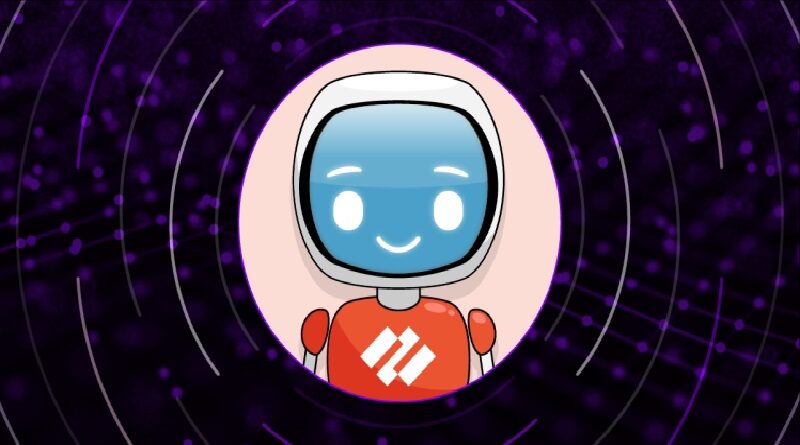Why Palo Alto Networks rebuilt its workplace with AI
For decades, employee experience has been a buzzword a vague promise that’s probably somewhere in your company’s HR handbook. But as half of U.S. employees look for their next job, vague promises won’t stop them from quitting.
The simple truth is that our expectations have changed. In 2022, we expect to get what we want instantly and effortlessly, whether that’s personalized movie recommendations or directions to the closest coffee shop. Yet when we need something at work, we’re still stuck digging through mass emails, waiting for the help desk to solve even routine issues, and dealing with automated systems that make everyone follow the same script.
The employee experience is broken, and this buzzword now determines the bottom line.
Amid the Great Resignation, Palo Alto Networks is an outlier. The company had a record year of hiring and growth in 2021, while Newsweek named it one of America’s Most Loved Workplaces. And critically, its focus on employee experience has translated to business success: its market cap has more than tripled since March 2020.
It would be easy to attribute that success to FLEXWORK, Palo Alto Networks’ bold policy that gives its people the flexibility to choose where and when they want to work. But its employee experience leaders, Steve Januario and Nicole Tate-Pappas, recognized that policy alone wasn’t enough. Over the past two years, Steve and Nicole have partnered with our team at Moveworks to build an AI-powered digital workplace — one that makes the promise of FLEXWORK a reality.
Enterprise tech is failing employees
The line between our personal and professional lives is blurrier than ever before. And when you’re using the same home office to browse YouTube as you are to search through old-school portals at work, it’s hard to ignore the disparity.
Of course, the problem of enterprise tech goes beyond a single system. The average large company relies on 288 SaaS applications, which their employees have to learn to get anything done. The result is one frustrating moment after another. We forget our passwords, we can’t find information, we scour through one app only to realize the report is somewhere else.
So while businesses announce big policy changes to combat the Great Resignation, these small moments are the real culprit.
That’s why the Palo Alto Networks team focused on fixing small issues using Sheldon, the company’s AI chatbot that’s powered by Moveworks. By automatically solving issues like password resets and HR questions, Sheldon could enable employees to spend their time on rewarding work, not busy work.
A data-driven approach to AI
To fix small moments of frustration with AI, Palo Alto Networks needed visibility into which issues were actually slowing down its workforce.
Consumer tech shows us what’s possible by combining powerful AI with usage data. YouTube, for example, can address small friction points in its user experience by seeing exactly what you’re searching for, what video you click on after each search, and how long you’re likely to watch it. Yet few leaders have this level of visibility into the employee experience: exactly what issues their employees have, what resources they’re using for support, and whether those resources are effective.
With Sheldon, Palo Alto Networks has gained the data it takes to fill the biggest gaps, from common IT questions to urgent HR requests. Because over 90% of employees go to Sheldon when they need help, Steve and Nicole can monitor companywide insights from the bot to understand which policies are causing confusion, what forms employees are requesting, and in general, where to create self-service resources and workflows.
Palo Alto Networks has now saved its employees more than 180,000 hours of productivity with Sheldon, thanks to this data-driven approach.
Old habits die hard
So how did Palo Alto Networks manage to get over 90% adoption of its AI chatbot? What separates Sheldon from the endless list of applications that promise to simplify the employee experience, but end up adding to the mess?
There are two lessons here. The first is that you can’t improve employees’ lives by asking them to change how they work; instead, you should work backwards from their existing habits. That meant making Sheldon available everywhere employees were already going for help, including Slack, email, and the ServiceNow portal. Rather than introducing another siloed tool, Palo Alto Networks brought its bot to the party.
The second is to reinforce employees’ habits when it comes to the user interface. Again, consumer tech like Google and YouTube get this right: you just ask for what you want, then rely on AI to find relevant results. Conversation is the only user interface that everyone knows, which is why Palo Alto Networks ensures that Sheldon provides the same, conversational UI in each support channel.
The potential of personalization
Personalization is at the heart of FLEXWORK: it lets employees pick the benefits, schedule, and work arrangements that best accommodate their needs. As a result, Sheldon had to deliver automated support at all hours of the day, anywhere in the world, based on each employee’s unique profile.
I’m particularly proud of our efforts to personalize support at Palo Alto Networks. Whenever an employee submits a request to Sheldon, Moveworks determines the right solution or combination of solutions, using deep learning models that consider her role, department, location, seniority, permissions, request history, user feedback, and a host of other factors. It’s certainly not the easy way to do it, but there’s no shortcut to supporting flexible work with automation.
It’s time for action, not promises
Employee experience is not just a buzzword — it needs to be your number-one priority. Palo Alto Networks has proven what’s possible when you invest time and resources into building a world-class workplace: a record year of growth for the business.
If I can offer one recommendation, it’s to question the foundation of your own workplace. Are you delivering on your promises? Can your employees focus on what matters? Because if not, now is the time to act.




